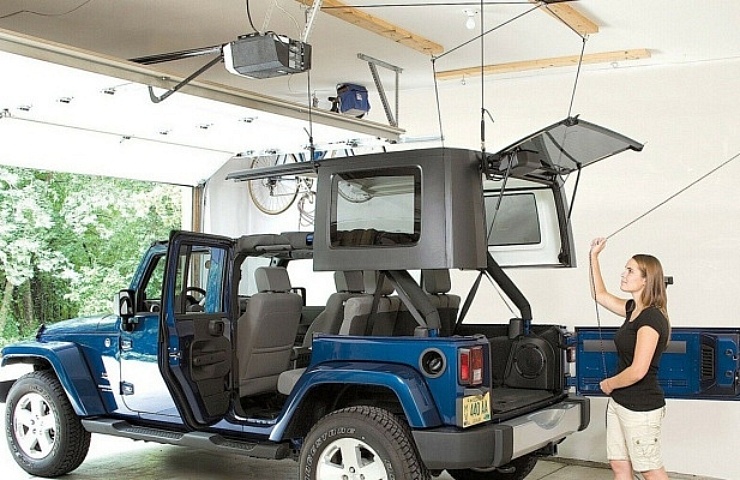It’s that time of year when Jeep owners can finally remove the roof coverings from their 4x4s. But what’s the best way to remove and safely store your Jeep hardtop? Your list of options includes Jeep hardtop lifts, hoists, and storage bags.
Shop now for Jeep hardtop lifts and hoists
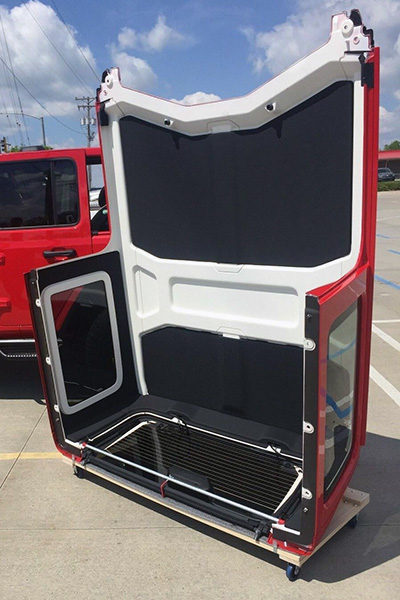
A cart offers a safe solution for maneuvering a Jeep hardtop.
The Low-Tech Way to Remove Hardtops
The old-school way to remove a Jeep hardtop is to ask a buddy to lend a hand. In most cases, two people can hoist a bulky hardtop, wrap it in an old blanket, and place it in a corner of the garage.
However, it’s not an ideal approach. Hardtops are heavy and unwieldy. Even two robust adults might have their hands full maneuvering the top up and away from the Jeep. Besides, once the roof piece is left on the garage floor, you run the risk of someone bumping into it.
To avoid that concern, after your friend helps you remove the hardtop, promptly place it on a moving cart—secured with straps. This will allow you to wheel the top to an out-of-the-way place with two or more thick, padded moving blankets.
A Jeep Hardtop Hoist with Wheels
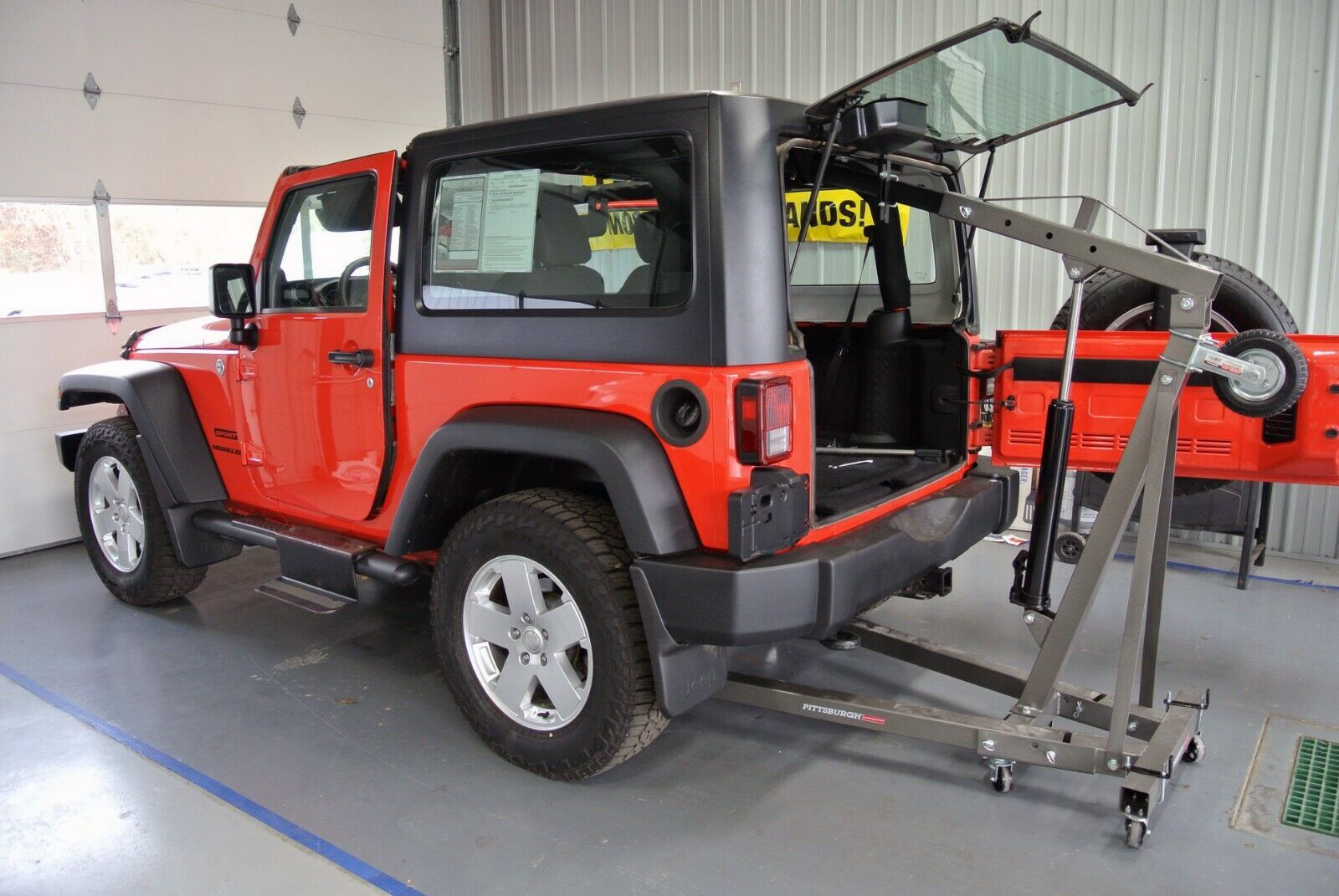
A floor hoist offers a safe and convenient way to remove and store a Jeep hardtop.
Do you prefer a solo system? Then a hardtop hoist is a great option. Think of it like an engine hoist but designed to lift a Jeep hardtop (or one that provides attachments for hardtops).
A hardtop hoist has wheels to position it into place. Then attach the hardtop with clips or straps. After the hardtop is released from the Jeep body, the owner can ratchet up the hoist to lift the hardtop.
At that point, it’s easy to wheel the hoist to a desired location, leaving the hardtop on the hoist. Or, for extra security, lower the hardtop to a convenient spot on the ground.
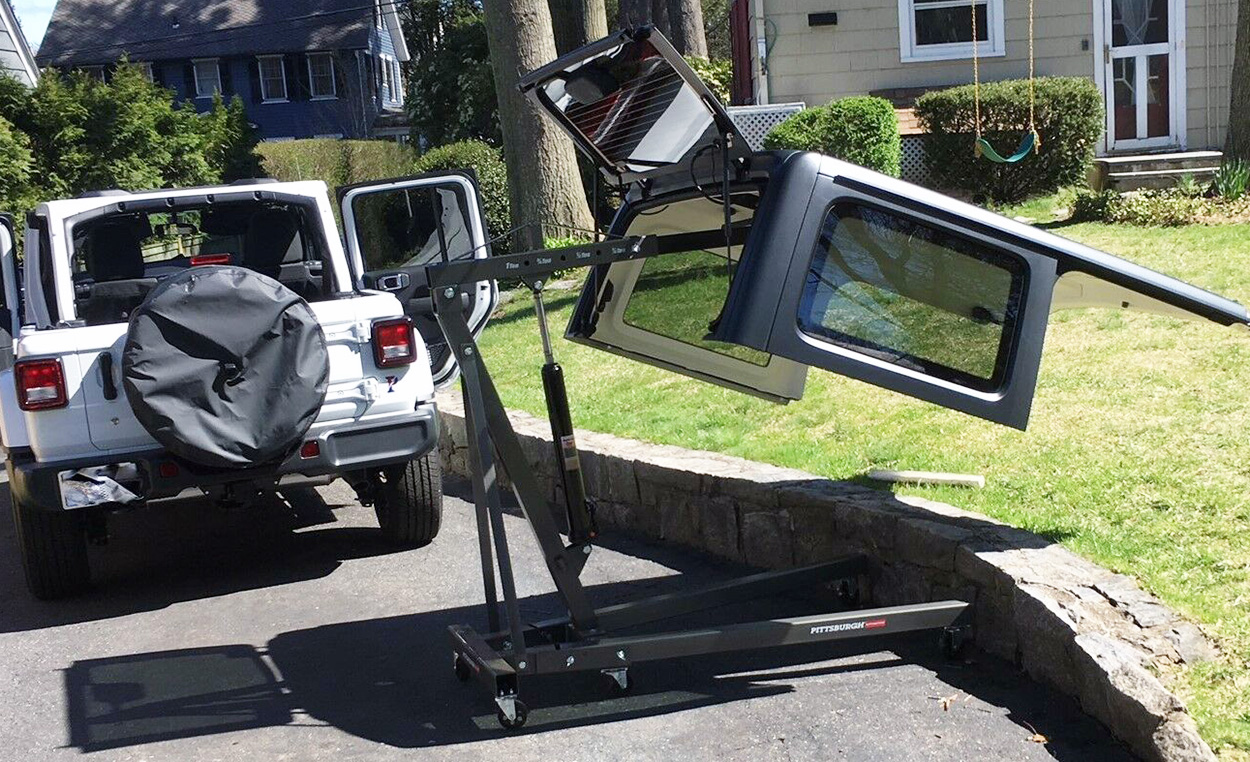
An attachment to an engine hoist allows for easy removal of Jeep hardtops.
A Jeep Hardtop Lift for the Ceiling
Another viable option is to install a lifting device in the ceiling of the garage. After the lift is installed, most of your work is done for the long run. As soon as driving season hits, simply lower the lift to the Jeep’s roof, strap the hardtop to the lifting structure, and pull it up and away.
Lifts can be as simple as a rope system that you manually winch up with the hardtop attached. Or go with a luxury solution: a motorized winch. Some lifts use Bluetooth and a smartphone app to go up and down.
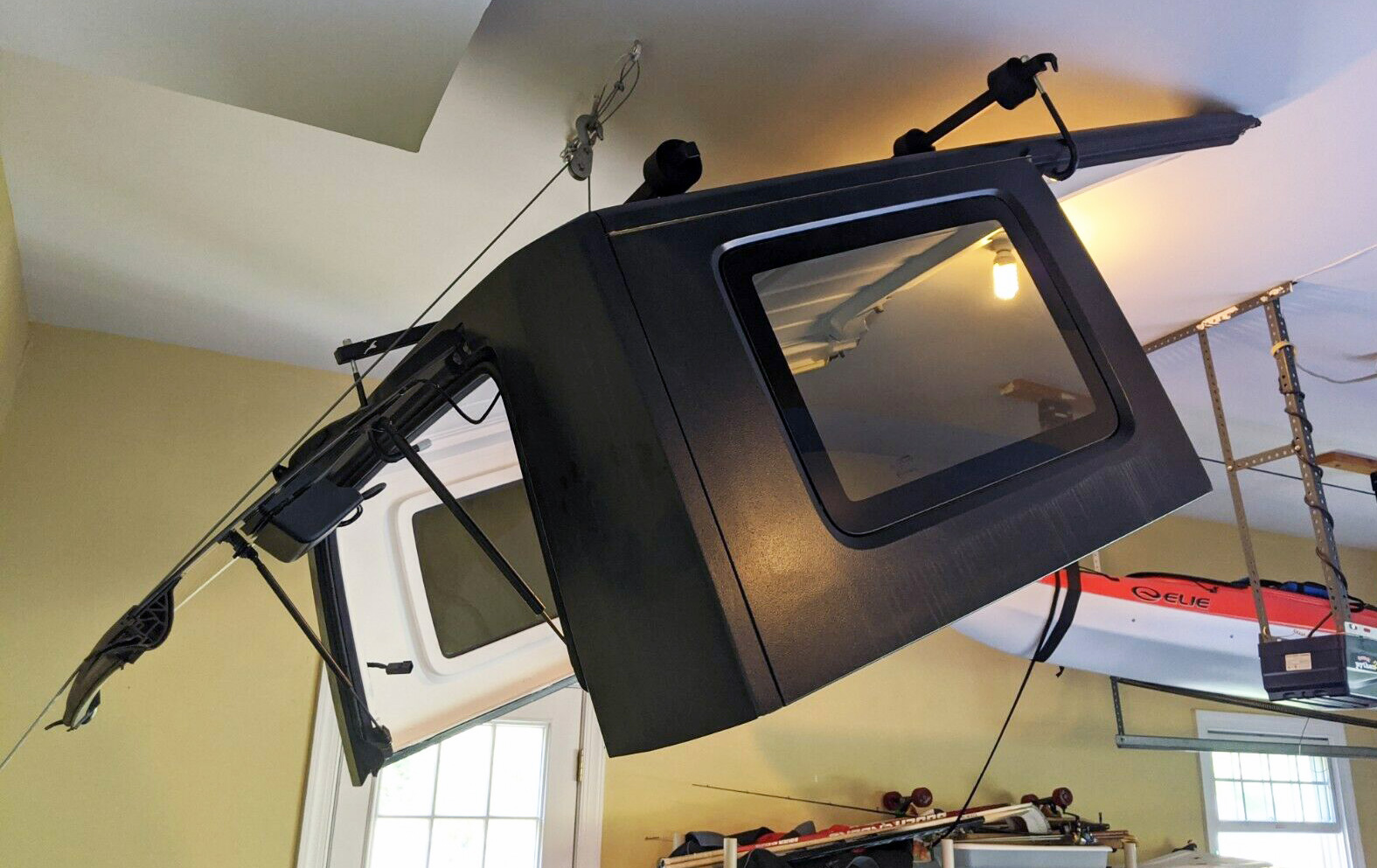
Once removed, a hardtop can be stored close to the ceiling of the garage.
Whether it’s a manual or automated system, the goal is to ensure smooth and accurate operation. You don’t want the Jeep hardtop to lift too high against the ceiling—and it should gently lower down to avoid banging into the vehicle’s body.
A ceiling-mounted lift is slightly less flexible than other options. You’ll need to drive the Jeep into a precise position. And that will become the only parking spot for removing and re-attaching the hardtop.
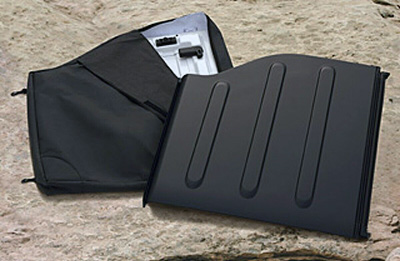
A panel storage bag offers padding and security for a Freedom panel.
Jeep Hardtop Storage Bags
Does your Jeep have roof-top Freedom panels? That’s the Mopar roof design using three removable panels. It gives Wrangler owners the option of removing either the centerpiece for a little bit of air and sun. Or you can go completely al fresco by removing the two side pieces as well.
Removing panels presents a similar challenge as a full hardtop: How do you store the panels to avoid scratches and other damage? One smart option is to place them in a padded storage bag. These bags are typically designed specifically with a snug and secure fit for your Freedom panels.

